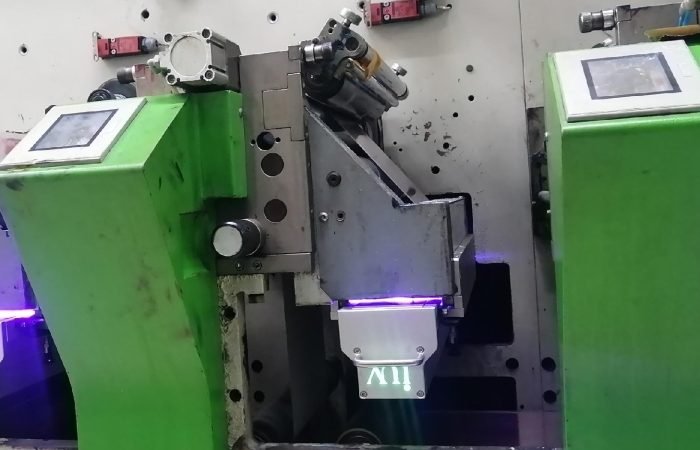Optimizing UV curing systems for specialty inks in flexo printing unlocks incredible potential. Narrow web flexography is a dynamic field. It demands precision and speed. Specialty inks offer unique finishes and properties. Achieving perfect curing is paramount. This ensures print quality and durability. Understanding UV curing technology is key.
LED UV curing systems are revolutionizing the industry. They provide instant, energy-efficient drying. This is a significant advantage over traditional methods. For flexographic printing, especially on narrow web presses, efficiency matters. Specialty inks, like those with metallic effects or pearlescent finishes, require careful curing. Their unique formulations can impact ink transfer and drying.
When working with specialty inks, the interaction between the ink and the UV lamp is critical. Different pigments and additives absorb UV light differently. This means standard curing settings might not suffice. You need to adjust your LED UV system. This optimization ensures thorough polymerization. Incomplete curing leads to smudging. It also results in poor adhesion. This can ruin a perfectly good print job.
Flexographic printing often deals with a wide range of substrates. These include films, foils, and paper. Each substrate has its own properties. It might reflect or absorb UV light. This affects how deeply the ink cures. For example, a highly reflective foil might bounce some UV light away. You might need to increase the UV intensity. Or perhaps adjust the exposure time. This ensures the ink at the bottom of the ink film cures properly.
Narrow web presses are designed for high-speed production. This means your UV curing system must keep up. The curing speed needs to match the press speed. If the curing is too slow, you’ll encounter ink transfer issues on subsequent stations. This is a common problem. It leads to costly downtime and waste. Optimizing the UV lamp placement and power is essential. Ensure uniform coverage across the entire web width.
Specialty inks can include very opaque whites. They can also feature vibrant fluorescents. They might even be thermochromic or photochromic. Each of these demands specific curing conditions. Opaque whites can block UV light. This makes it harder for the lower ink layers to cure. You might need higher intensity LEDs. Or perhaps a different wavelength of UV light. Some inks perform better with mercury lamps, but LEDs offer significant advantages.
LED UV technology offers precise wavelength control. This is a huge benefit for specialty inks. You can select LEDs that emit wavelengths. These wavelengths are specifically absorbed by the photoinitiators in your ink. This targeted approach leads to more efficient and complete curing. It minimizes wasted energy. It also reduces heat generation. This is important for heat-sensitive substrates.
Consider the spectral output of your LED UV system. Does it align with the absorption spectrum of your ink’s photoinitiators? This is a crucial question. Many specialty inks are formulated with specific photoinitiators. They are chosen for their performance with UV curing. Matching the lamp output to the ink’s needs is paramount. This is where the optimization truly begins.
Ink film thickness also plays a vital role. Thicker ink films require more UV energy to cure completely. In flexographic printing, controlling ink laydown is key. Specialty inks might have higher viscosity. This can lead to thicker ink films. You’ll need to ensure your UV system can deliver sufficient energy. This penetration is necessary for full cure.
The distance between the UV lamp and the substrate is another factor. Too far, and the UV intensity drops significantly. Too close, and you might overheat the substrate. Or you might cause premature curing on the surface. This skinning effect can trap uncured ink underneath. Finding the optimal distance ensures uniform energy delivery. It’s a balancing act.
When optimizing for narrow web flexo, think about web handling. Ensure the web is flat and stable under the UV lamps. Any flutter or movement can cause uneven curing. Consider the ventilation around the curing unit. Proper airflow helps manage heat. It also prevents ozone buildup from older UV lamp types. LED systems generate less ozone. This is another plus.
For printers using specialty inks, investing in diagnostic tools can be beneficial. UV radiometers can measure the actual UV dose reaching the substrate. This data allows for precise adjustments. You can move away from guesswork. You can achieve repeatable results. This is invaluable for color-critical jobs or when maintaining brand consistency.
Remember that different specialty inks have different cure requirements. A metallic ink might have a high pigment load. This pigment can absorb UV light. You might need to increase the UV dose. A clear overprint varnish with special effects might have a different photoinitiator package. It will likely require different curing parameters. Understanding the ink manufacturer’s recommendations is a starting point. The real magic happens with fine-tuning.
The benefits of properly optimized UV curing for specialty inks are numerous. You get enhanced print durability. Resistance to abrasion and chemicals improves dramatically. You achieve superior color vibrancy and gloss. Production speeds can be maintained or even increased. Waste is reduced due to fewer print defects. And the ability to offer unique, high-value finishes to clients expands market opportunities.
In conclusion, mastering UV curing for specialty inks in flexographic printing is a journey of understanding and adjustment. By focusing on the specific properties of your inks, substrates, and press conditions, you can unlock the full potential of your LED UV curing systems. This leads to exceptional print quality and operational efficiency. The narrow web market thrives on innovation. Optimized UV curing is a cornerstone of that innovation. It allows for breathtaking visual effects and robust product performance. Embrace the science, test diligently, and watch your specialty print projects shine.












